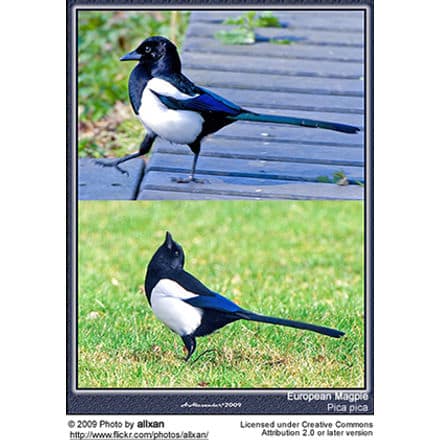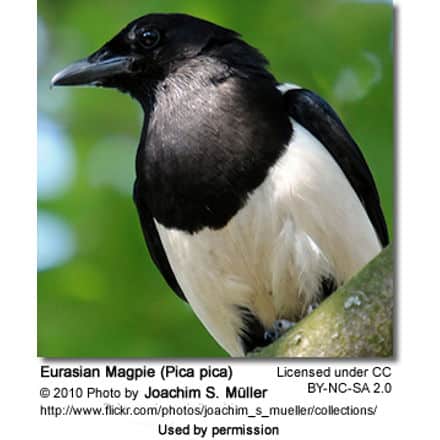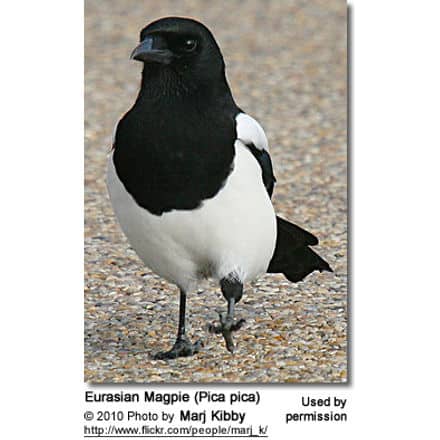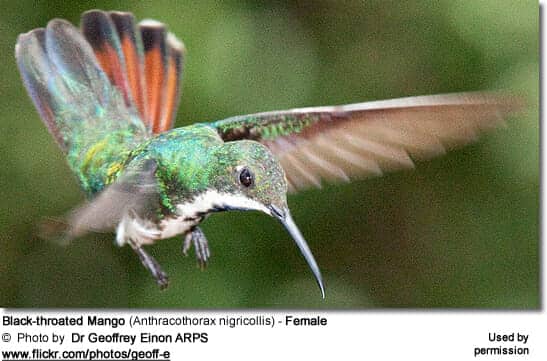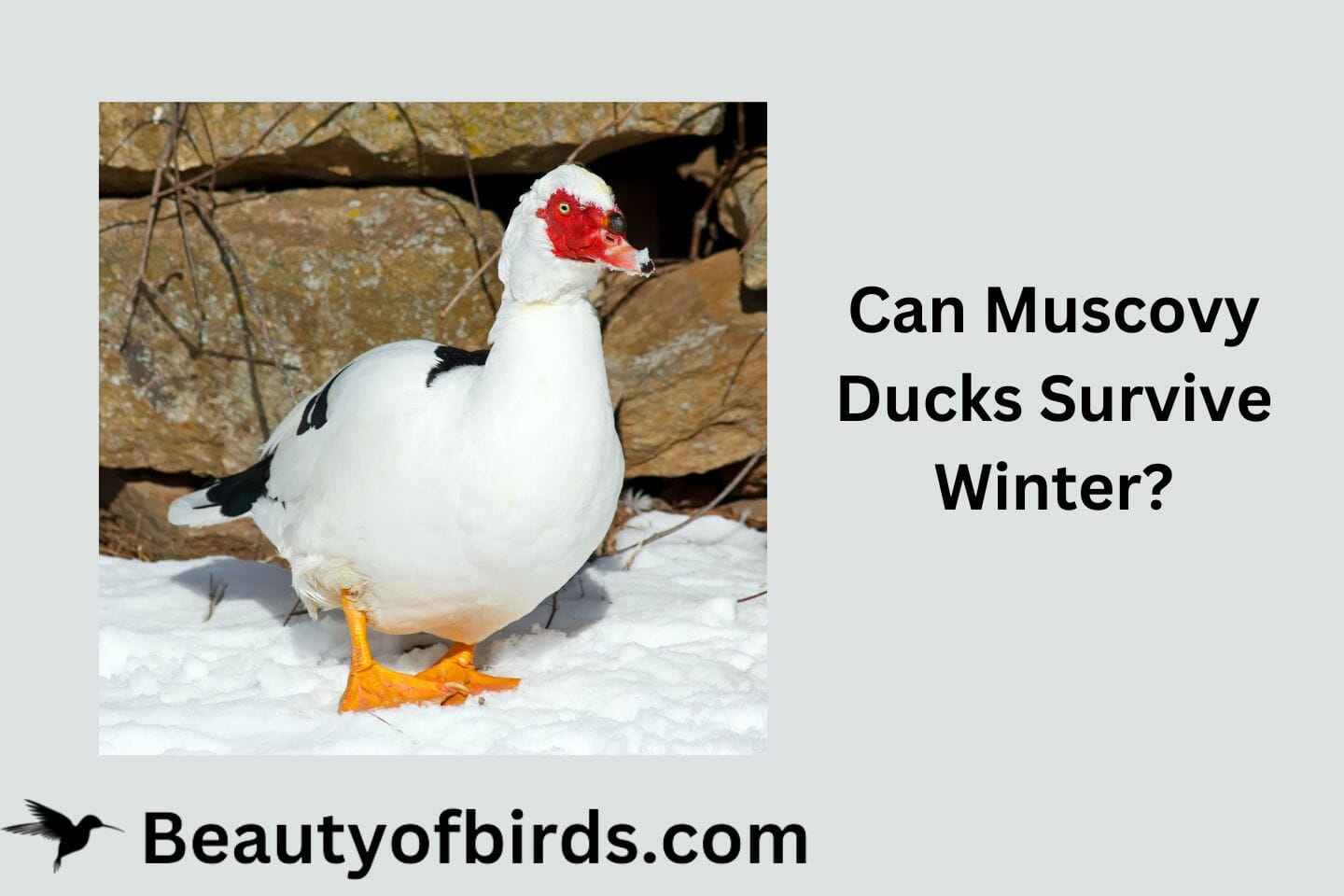European Magpies aka Eurasian Magpies
The European Magpie, also Eurasian Magpie and Common Magpie (Pica pica), is a resident breeding bird throughout Europe, much of Asia and northwest Africa. It is one of several birds in the crow family named as magpies, and belongs to the Holarctic radiation of “monochrome” magpies.
In Europe, “Magpie” is used by English speakers as a synonym for the European Magpie; it is the only magpie in Europe outside the Iberian Peninsula.
Description and systematics
The European Magpie is 44–46 centimetres (17–18 in) in length – in the adult over 50% of this is tail – and a wingspan of 52–62 centimetres (20–24 in).
Its head, neck and breast are glossy black with a metallic green and violet sheen; the belly and scapulars (shoulder feathers) are pure white; the wings are black glossed with green or purple, and the primaries (longest wing feathers) have white inner webs, conspicuous when the wing is open. The graduated tail is black, shot with bronze-green and other iridescent colours. The legs and bill are black.
The young resemble the adults, but are at first without much of the gloss on the sooty plumage. The male is slightly larger than the female.
There are numerous subspecies. The northwest African race differs in having a patch of blue bare skin around the eye, no white patch on the rump and an unglossed tail. The southwest Arabian race differs in being smaller, with dull black plumage lacking iridescent tones, and minimal white in the wings. The Siberian races have more extensive white in the wings, and brilliant green iridescence; Korean birds have a purple gloss instead and relatively longer wings and a shorter tail.
Analysis of mtDNA sequences has indicated that the Korean race, P. pica sericea, is very distinct from the other Eurasian forms, and may be a separate species. The North American Black-billed Magpie which looks almost identical to the Eurasian form and was previously considered conspecific (one single species) is genetically closer to the Yellow-billed Magpie.
The main Eurasian lineages of this astoundingly variable species have not been sufficiently sampled to clarify the status of such forms as the northwest African race P. p. mauretanica and the southwest Arabian race P. p. asirensis, which could also be distinct species.
A larger palaeosubspecies of the European Magpie was described as Pica pica major.
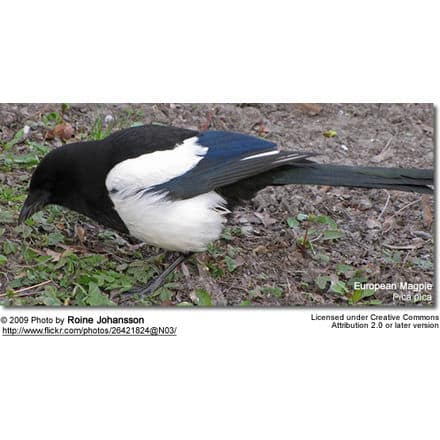
Ecology and behavior
The European Magpie is a distinctive species with its pied plumage, long 20–30 centimetres (8–12 in), graduated tail and loud chatter.
When Magpies pass each other in open country, they command attention by rapidly moving their wings and chattering. When the bird lands, the long tail is elevated and is carefully carried clear of the ground.
Like other corvids, such as crows, the Magpie usually walks, but it can also hop quickly sideways with wings slightly opened.
The Magpie and the rest of its family are fond of bright objects.
Mirror self-recognition has been demonstrated in European magpies. The magpie is thus one of a small number of species, and the only non-mammal, known to possess this capability.
Diet / Feeding
The Magpie will eat any animal food. These foods include young birds and eggs, insects, scraps and carrion. The bird will also eat acorns, grain and other vegetable substances.
Magpies are common to suburban areas but can be more shy and cautious in country areas. The birds do not avoid humans unless they are harassed. Sometimes the two or more birds display “teasing” behaviour towards animals such as cats. It is thought that this behaviour may be to scare away potential predators and egg thieves.
In winter the Magpie often form groups to feed and roost at night. Early in the year, large numbers collect together for mating in gatherings Charles Darwin described as “marriage meetings”.
The magpie has been observed taking small songbirds down in flight. This behaviour was once thought to occur only in birds of prey.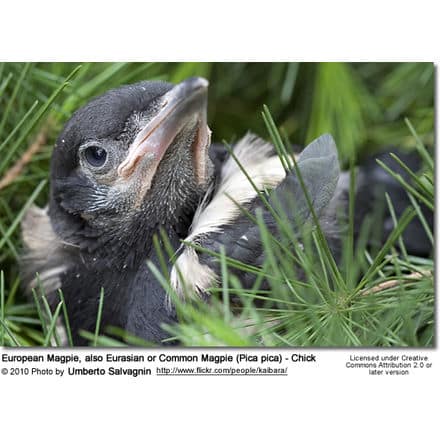
Reproduction
Magpies are territorial and stay in their territory all year, even in north of the species range. The pairs are monogamous, and remain together for the duration of their lives. Should one of the two die, the widow or widower will find a new partner from the stock of yearlings.
Mating takes place in spring. In the courtship display, the males rapidly raise and depress their head feathers, uplift, open and close their tails like fans, and call in soft tones quite distinct from their usual chatter.
In the display the loose feathers of the flanks are brought over and the primaries (longest wing feathers), and the patch on the shoulders is spread so as to make the white conspicuous, presumably to attract the female eye. Short buoyant flights and chases are part of the courtship.
Tall trees are selected by the Magpie for its bulky nest; it is firmly attached to a central fork in the upper branches.
The framework of the sticks is cemented with earth and clay, and a lining of the same material is covered with fine roots; above is a stout though loosely built dome of prickly branches with one well-concealed entrance. When the leaves fall these huge nests are plainly visible.
Where trees are scarce, and even in well-wooded country, nests are at times built in bushes and hedgerows.
The eggs, small for the size of the bird, number from five to eight, and as many as ten are recorded; they show much variation in ground and marking, but a usual type is blue-green with close specks and spots of brown and grey.
They are laid in April, and only one brood is reared unless disaster overtakes the first clutch.
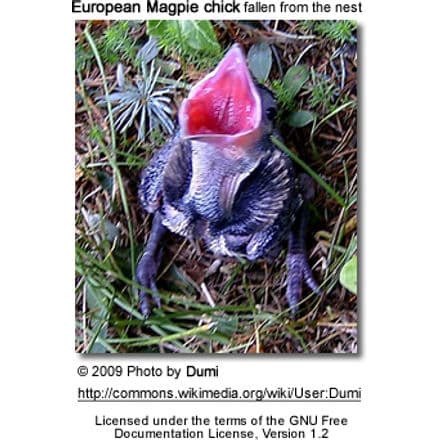 |
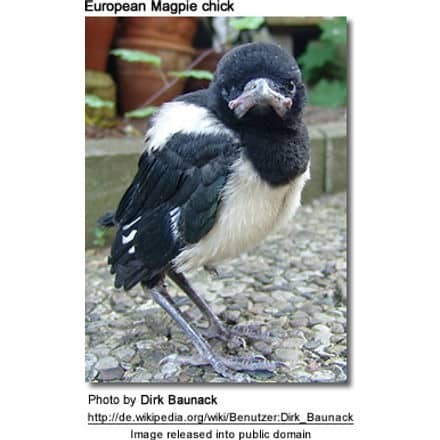 |
Magpie in culture
Etymology
The common name comes from magot pie (pied Margot), first found in Shakespeare’s Macbeth.
The scientific name Pica is just the Latin word for Magpie. When Linnaeus first described this species in 1758, he named it Corvus pica.
Folklore
In European folklore the magpie is associated with a number of superstitions surrounding its reputation as an omen of ill fortune. This reputation may derive from the bird’s well-known tendency to “steal” shiny objects or its aggressive behaviour toward favoured songbirds.
In Asia the magpie is associated more often with hospitality and good fortune. The Formosan Blue Magpie is the national bird of Taiwan.
British Isles
- In Britain and Ireland, there are a number of superstitions regarding magpies
- A single magpie is associated with bad luck (see rhymes below)One should make sure to greet magpies when they are encountered in order to either allay bad luck or encourage good luck as related to the number of birds and therefore their place in the Magpie poem. Common greetings include “Hello Mr Magpie” “How is your wife/where is your wife?”, “Good Morning/Evening Sir” and other marks of respect.Upon seeing a lone magpie one should repeat the words “I defy thee” seven times.On seeing a lone magpie one should pinch the person they are walking with, if they are alone they are to pinch themselves. The custom in Devon is to spit three times to avert ill luck.If a lone Magpie is seen, one should salute it to show you respect it. This formality can be forgone if the Magpie looks directly in your eyes, which shows it respects you.
- In the 19th century book, A Guide to the Scientific Knowledge of Things Familiar, a proverb concerning magpies is recited: “A single magpie in spring, foul weather will bring”. The book further explains that this superstition arises from the habits of pairs of magpies to forage together only when the weather is fine.
- An old English folk tale states that when Jesus was crucified on the cross, all of the world’s birds wept and sang to comfort him in his agony. The only exception was the magpie, and for this, it is forever cursed.
- In Scotland, a Magpie near the window of the house foretells death.
- In Scottish folklore, in a story possibly related to the above, magpies were long reviled for allegedly carrying a drop of Satan’s blood under their tongues.
Continental Europe
- In Norway, the magpie is of ambivalent nature, both considered cunning and thievish, sometimes even wicked and associated with the devil and witchcraft, and at the same time as guardian of the homestead and protector of the household. Magpies were sometimes fed during the winter in order to prevent them from leaving the farm, and a nesting magpie was considered a good omen. A playful and loud bird is also bringer of good weather.
- In both Italian and French folklore, magpies’ penchant for picking up shiny items is thought to be particularly directed towards precious ones. Rossini’s opera La gazza ladra and The Adventures of Tintin comic Les Bijoux de la Castafiore are based on this theme.
- In Bulgarian, German and Swedish folklore the magpie is also seen as a thief. In Sweden it is further associated with witchcraft.
- In the Middle Ages and during the witch-hunts in Europe, the bird was considered to be connected with witchcraft, just like crows, ravens and black cats.
Asia
- In Korea, it is believed that a guest will arrive when the cry of a magpie is heard.
- In China the magpie is one of the most popular birds and is seen as the messenger of good news and fortune. Its name in Chinese literally means “bird of joy” (??). Magpies commonly feature in Chinese folktales, the best-known of which is “The Story of Cowherd and Weaver Girl”, where they form a bridge for the separated lovers every year on the day of Qixi.
- In Taiwan a indigenous magpie species was recently voted the national bird.
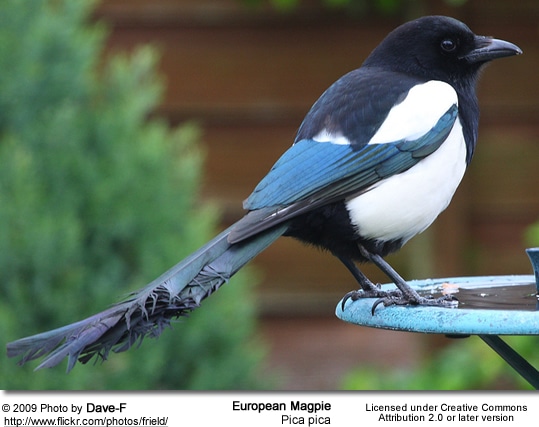
The Magpie rhyme
In Britain and Ireland a widespread traditional rhyme records the myth (it is not clear whether it has been seriously believed) that seeing magpies predicts the future, depending on how many are seen. There are many regional variations on the rhyme, which means that it is impossible to give a definitive version.
Version F (Manchester)
One for sorrow, Two for Joy, Three for a girl, Four for a boy, Five for silver, Six for gold, Seven for a secret never to be told, Eight for a wish, Nine for a kiss, Ten a surprise you should be careful not to miss, Eleven for health, Twelve for wealth, Thirteen beware it’s the devil himself.
Popular culture
Popular Stories
A British children’s TV show called Magpie featured a theme song based on the “one for sorrow” rhyme, and featured a large cartoon Magpie as its mascot or logo.
A magpie named Snipes with a snobbish disposition is a main character in the film Rock-A-Doodle. Heckle and Jeckle, two magpies created by the Terrytoons cartoon studio, were popular on screen and in comic books.
One had an English accent, the other a Brooklyn accent. Two magpies resembling the cartoon birds are featured in Windex commercials on TV.
Magpie (Margaret Pye) is the name of a villain in DC Comics known for her grating voice and penchant for stealing shiny objects.
Music
La gazza ladra (The Thieving Magpie) is an opera in two acts by Gioachino Rossini. The very distinct overture is well known, and has been used by the band Marillion.
A magpie with a ring in its beak is depicted on several of the band’s early albums.
Musician Patrick Wolf’s song “Magpie”, found on The Magic Position, utilizes a version of the magpie rhyme and also references its thieving ways.
Magpie is a song by The Mountain Goats, from the album The Sunset Tree.
Magpie is also a song by British singer Abraham, from the album Blue For The Most.
Recreation
Two English football clubs, Notts County and Newcastle United are nicknamed “The Magpies” due to their black and white striped playing kits. Notts County’s club crest depicts a football on which perch two magpies.
Thieving Magpie, named for the Thieving Magpie Overture is a popular card in the trading card game Magic: the Gathering. In target shooting the score for a shot striking the outermost division but one is called a “magpie” because it was signalled by a black and white flag.
Colloquial language
Bishops were formerly called “magpies” in humour or derision because of their black and white vestments.
Lawyers as vultures, had soared up and down; / Prelates, like Magpies, in the Air had flown.–Howell’s Letters: Lines to the knowing reader.
Magpie Information … Magpie Species Photo Gallery

